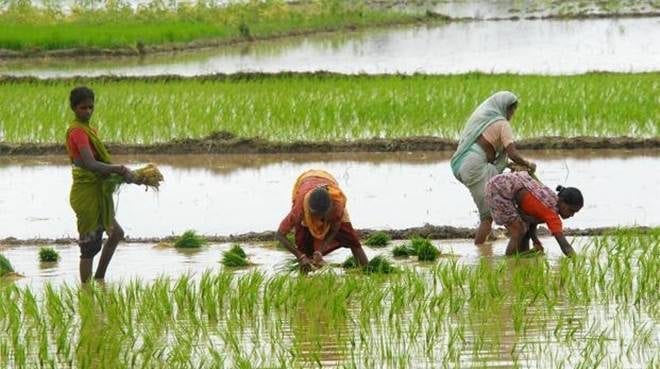
Extend TN irrigation law benefits to Kudimaramathu, demand activists

Two years ago, the Tamil Nadu government launched Kudimaramathu, an age-old practice of maintaining tanks. With an objective of rejuvenating existing water bodies in the state, the government allocated ₹100 crore for the first phase and around 1,519 tanks in 30 districts were desilted.
The numbers grew in the second phase, with 2,065 tanks were desilted at a cost of ₹332 crore in 2017-2018. In the third phase, while ₹332 crore was allocated for the scheme, only 1,511 tanks were desilted whereas in 2019-20, around 1,829 tanks are to be desilted at an estimated budget of almost ₹500 crore.
According to the scheme, each tank has to be managed by a group of villagers.
In the past, the state had brought the Tamil Nadu Farmers Management of Irrigation Systems (TNFMIS) Act in 2000, which had the provision to create ‘Water Users Associations’ (WUA), which would act as an executing authority for tanks under the Public Works Department (PWD). The Act also had a provision for holding elections for the WUAs. However, these have now become defunct and elections for WUAs have also not been held in the last few years.
Now, activists are demanding that the TNFMIS Act be extended to the Kudimaramathu scheme, to cover tanks under the village panchayats.
Venkatesan, chief executive officer, Vayalagam Foundation, Madurai, explained that Tamil Nadu has around 41,127 tanks, of which 16,098 are with the PWD and are required to irrigate over 100 acres of land.
“The elections for WUAs are conducted only for such tanks and the Act has nothing to do with the tanks, which have less than 100 acres to irrigate and fall under Panchayat,” he said. His foundation is a part of DHAN, an NGO working in 14 districts of Tamil Nadu on water-related projects.
Eighth Column: Chandrababu Naidu’s Capital failures
He says that unless farmers in villages are brought on board, the Kudimaramathu scheme will not be a success, noting that only farmers know their requirements and can implement the scheme according to the demand.
In this regard, even Chief Minister Edapaddi Palaniswami, during a debate in the Assembly on grants for public works department (PWD), his pet department, had on July 15 stressed on the importance of cooperation of farmers associations for the success of Kudimaramathu scheme in the state.
Venkatesan alleged that under the TNFMIS Act, the PWD selects the tanks and starts working on it without any consultation with the people in the area. “Hence, many of the ‘link canals’ are left in a lurch. Wherever there is no river, it is these tanks that help the people in providing water,” he said.
It is by hearing people’s opinions, taking the labour they contribute and involving their participation in decision-making that the Kudimaramathu scheme will be successful, Venkatesan noted.
Also read: The Cauvery conundrum: Weak monsoon worries Karnataka farmers
In a paper titled ‘Will Kudimaramathu make communities Think Tanks again?’, R Sakthivadivel and Manisha Shah of International Water Management Institute argue that “the scheme should be demand-driven one and not pushed for the sake of completion”.
It further stresses that “if the rejuvenation of tank under Kudimaramathu scheme is implemented in a village where the components of the scheme truly address the existing crisis and the need of the village, then there is a very good chance that the scheme will be successful.”
In many cases, the implementation of the scheme is like any other top down scheme with little role of community, where WUAs exist only on paper and community participation is limited to programme documents, the paper points.
K Saravanan, Barefoot Academy of Governance, Perambalur, said that the government has allowed farmers’ association to take up the Kudimaramathu projects that cost less than ₹10 lakh, but he complained that many of the associations are not given the responsibility.
“In Perambalur, we studied 29 lakes last year and found that in most of them, not even a lakh was spent out of the total ₹2.5 crore that was allocated to this district. The main reason is, farmers in the region are not explained properly about the scheme,” he said.
“Political parties, using their power, gather some farmers and get signatures from them. Then they give the work to the contractors close to them,” he said, adding that such contract orders should be given farmers.
Also read: To double farmers’ income, PM Modi should focus on eastern India
Vasavalingam, a farmer who is a member of WUA in a village in Ramanathapuram, says unless farmers’ associations instill a sense of responsibility in villagers, the scheme will remain unbeneficial.
K Sivasubramaniyan, Professor, Madras Institute of Development Studies, says only when people contribute with their physical labour that “we can say it as Kudimaramathu in its true sense”.
“The amount disbursed by the government mainly goes to tanks under PWD. For tanks under panchayats, the panchayat president should organise a group and take the responsibility for rejuvenating the tanks. But since local body elections have not been held for almost three years, the mirasdars or other educated youths in the villages can come together and request villagers to contribute to desilting the tanks,” he said.


